As featured in Indesign issue #87, the centre for civic life in Ballarat is a complex project that delivers a community hub, workspaces and an architectural destination.

February 8th, 2023
Satisfying a plethora of stakeholders — and John Wardle Architects’ own aesthetic and strict sustainability ethos — Ballarat Government Hub is designed to endure. Both monumental and intimate, the design is bold and brilliantly realised. Moreover, the project answers myriad demands ranging from destination architecture to practical workspace, community hub, sympathetic neighbouring and community pride. Beyond the practicalities of the brief, it is also singularly and incredibly handsome.

It is cutting edge in terms of technology, but never simply for the sake of being first. Rather, it uses the best possible methods for the best possible outcome. Indeed, the project, with a base build of mass timber, has a targeted NABERS 5 Star rating. Designed to accommodate 1000-plus employees, the project is vast. It comprises five storeys above and two below-ground over 13,750 square metres of net lettable area, on a 5089 square metre site.
Enforcing design clarity the material palette is minimal: timber, brick, zinc and glazing. CLT (Cross Laminated Timber) and Glulam (Glue Laminated Timber) provides most of the main structure with LVL (Laminated Veneer Lumber) timber used in the conservatory. Custom bricks from Krause Bricks in nearby Stawell are used for the podium. Zinc cladding in a rich terracotta picks up the stripe of colour on the neighbouring historic Civic Hall and foregoes the inappropriate glass office block norm.

Stakeholder complexity is no small thing in a project of this scale. Here, Development Victoria is the owner and primary stakeholder along with Regional Development Victoria; Department of Jobs, Precincts and Regions; and the Department of Premier and Cabinet. Under their auspices VicRoads, Regional Development Victoria, State Revenue Office, Service Victoria, Consumer Affairs Victoria, Department of Education and Training, and Department of Justice and Community Safety will be housed in the hub.
It is also part of Ballarat’s civic precinct and, as such, appropriateness of scale, community accessibility, aesthetic and physical impact were all given due consideration. Consultation with stakeholders was comprehensive, as was consultation with occupants, Ballarat City Council, local businesses, and local community consultation via an open weekend. Naming of the lower civic hall as the Catobeen Building came from discussions with local Elders from the Wadawarrung Traditional Owners Aboriginal Corporation.
Related: Award-winning Olderfleet

Aesthetically realised as a large country barn, the shape is purposefully skewed to align with the Town Hall at one end and entry to Ballarat at the other. “The building’s skew allowed us a way to recognise that off-kilter alignment,” says Stefan Mee, John Wardle Architects partner and project lead. “It also created quite an interesting profile for the building.”
The skew additionally lends the building a kinetic quality, in that when walking around the site the reading of the building proper shifts depending on location, whereas a single gable through the centre would create a static form. When seen from the Civic Hall end, the roof shape ascends away from the hall to create a dialogue rather than continuation. Colour is similarly referenced rather than copied with the zinc cladding taking up the red shade used as a decorative motif within the neighbouring Civic Hall’s brickwork.

Viewed from the side, the horizontal expanse of zinc is broken by a higgledy-piggledy assortment of windows. “We didn’t want this to feel like a conventional office building so played against type and made it feel more domestic, more like a residential space that you’re occupying,” says Mee. To this end, the glass box of city architecture has been rejected both in look and functionality.
While designed pre-pandemic, there was already an understanding of the workspace as a shifting entity to augment the remote worker experience: “Office space is where you want to create social and peer-to-peer discussions and collaborative conversations that you can’t have when you’re working at home,” says Mee. As such, the windows define smaller, more intimate groupings that are conducive to smaller teams within the larger scheme of the building.

Moreover, the window arrangement, while looking random from the outside, is intentionally plotted to frame various landmarks around Ballarat, such as the town hall and station spire, when viewed from within.
Further breaking the horizontal expanse are two vertical areas of continuous glass. One is a stairwell, the other is a glazed portion that allows a view into the working life of the building. Framing collaborative work spaces and thoroughfares, rather than workstations per se, these are areas of constant change and interest.

Importantly, these areas provide cross departmental junctures: “It’s provided quite a lot of flexibility in the building – different government departments can work and maintain a level of separation and security, but then also connect back together again, across the floors or via the stairs.”
Amenity and transparency underpin the design with a vast landscaped conservatory serving as a community and tenant interactive space. Influenced by the idea of the Ballarat Botanic Gardens Glasshouse, the Conservatory boasts its own microclimate within a lofty expanse of timber framed glass. As the Civic Hall is restored it is anticipated the Conservatory will function as a pre-event meeting point.

Expanding the idea of transparency further, the ground floor meeting rooms have shopfront windows to the outside: “The meeting rooms are generally stacked into the edges of the building. So, the process of meeting with the public is actually quite transparent, and on display through the windows at street level,” says Mee. Public access is well considered with laneways threading through the site, an exhibition space and access via the Conservatory all connecting as a natural continuum.
Internally the vast timber structural beams create vertical and horizontal lines that define space and add to the beauty of natural timber. On the highest floor a large and open communal space looks out towards the town hall. Here the view is king with the city of Ballarat brought deftly into focus. It is an adroit reminder of the role of the hub as bound to the city, while clearly celebrating the city proper. As always with John Wardle Architects, it is exemplar on all levels and unabashedly a fabulous piece of architecture.
John Wardle Architects
johnwardlearchitects.com
Geyer Design
geyer.design
Photography
Peter Bennetts




Indesign #87: The State of Wellbeing issue — find out more here!
INDESIGN is on instagram
Follow @indesignlive
A searchable and comprehensive guide for specifying leading products and their suppliers
Keep up to date with the latest and greatest from our industry BFF's!

Welcomed to the Australian design scene in 2024, Kokuyo is set to redefine collaboration, bringing its unique blend of colour and function to individuals and corporations, designed to be used Any Way!

For Aidan Mawhinney, the secret ingredient to Living Edge’s success “comes down to people, product and place.” As the brand celebrates a significant 25-year milestone, it’s that commitment to authentic, sustainable design – and the people behind it all – that continues to anchor its legacy.
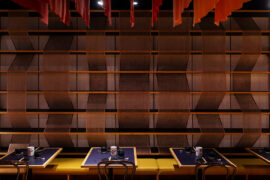
Designed by Kelly Ross, the newest addition to Bisa Hospitality’s portfolio represents more than just another restaurant opening.
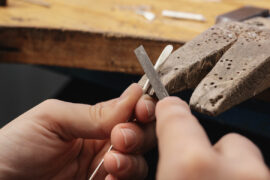
With the inaugural Glenn Murcutt Symposium set to take place in Sydney in September 2025, Pritzker Prize-winner Francis Kéré receives the Murcutt Pin.
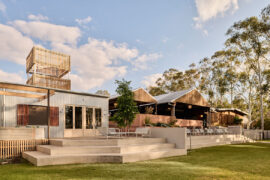
Technē’s latest pub project gives an iconic old woolshed new life, blending family-friendly community spirit and sentimentality with nostalgic design.

London-based design duo Raw Edges have joined forces with Established & Sons and Tongue & Groove to introduce Wall to Wall – a hand-stained, “living collection” that transforms parquet flooring into a canvas of colour, pattern, and possibility.
The internet never sleeps! Here's the stuff you might have missed
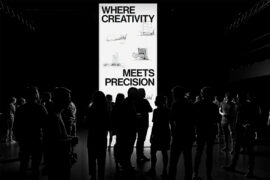
Director Ian Briggs is one of the longest serving members of the Plus team and – with a milestone rebrand complete and a Sydney event just yesterday – he walks us through the state of play at the practice in 2025.
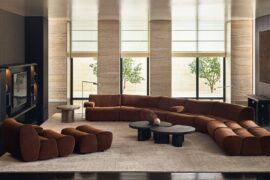
Poliform has mastered the art of seating that is both elegant and adaptable. These five designs highlight the balance between aesthetic impact and everyday ease.
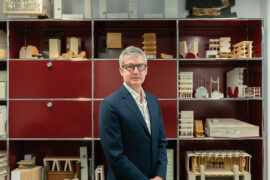
Leading by design, Erik L’Heureux has recently taken the helm of Monash University’s Department of Architecture, and so a new and exciting journey begins for both L’Heureux and the University.
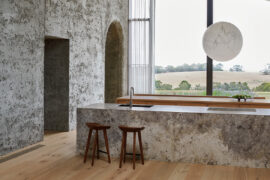
The INDE.Awards 2025 has named House on a Hill by Leeton Pointon Architects and Allison Pye Interiors as the winner of The Interior Space category, presented by Tongue & Groove. This multigenerational country home on Bunurong Country redefines residential architecture and design with its poetic balance of form, function, and sanctuary.